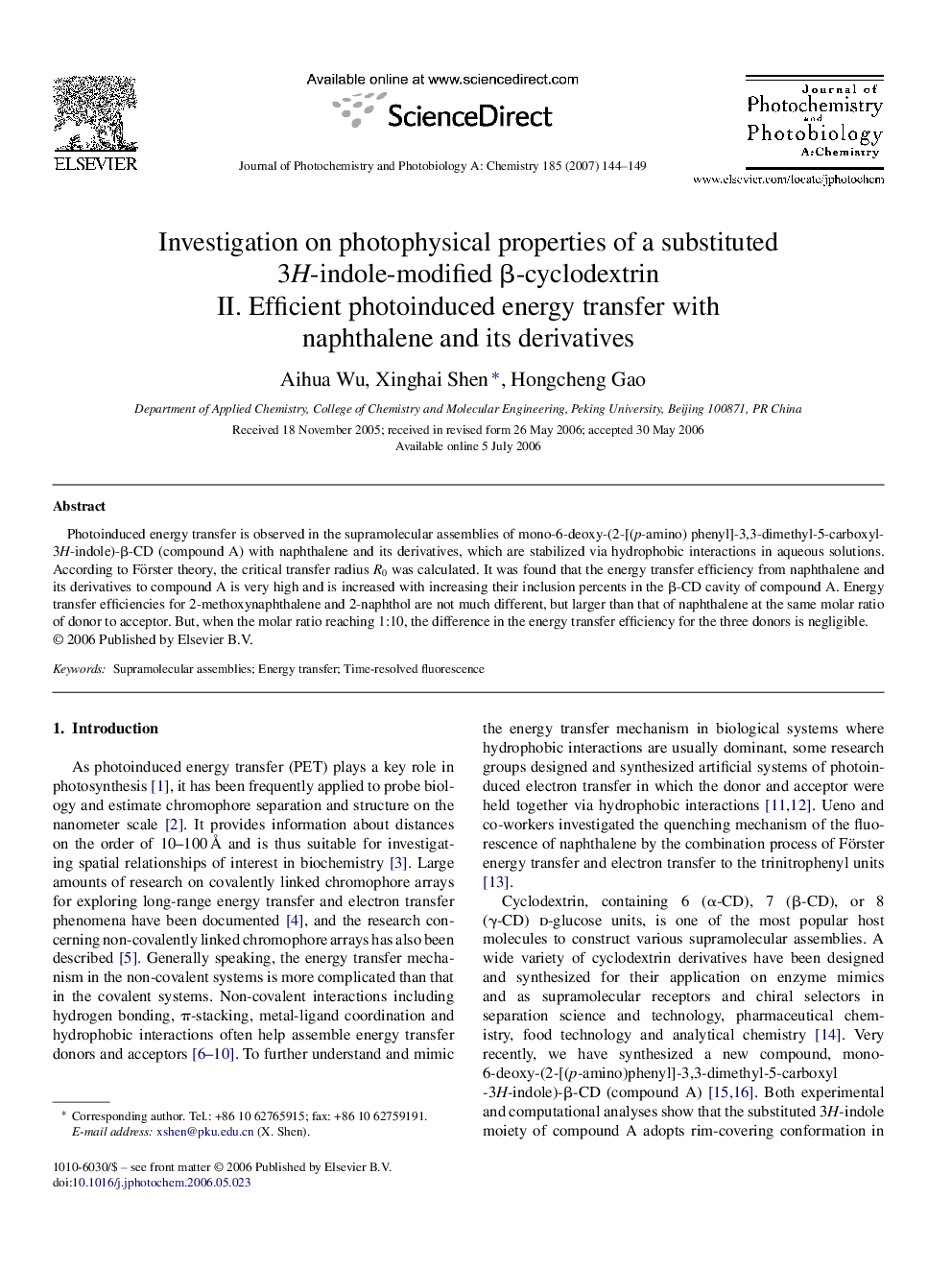| Article ID | Journal | Published Year | Pages | File Type |
|---|---|---|---|---|
| 28895 | Journal of Photochemistry and Photobiology A: Chemistry | 2007 | 6 Pages |
Abstract
Photoinduced energy transfer is observed in the supramolecular assemblies of mono-6-deoxy-(2-[(p-amino) phenyl]-3,3-dimethyl-5-carboxyl-3H-indole)-β-CD (compound A) with naphthalene and its derivatives, which are stabilized via hydrophobic interactions in aqueous solutions. According to Förster theory, the critical transfer radius R0 was calculated. It was found that the energy transfer efficiency from naphthalene and its derivatives to compound A is very high and is increased with increasing their inclusion percents in the β-CD cavity of compound A. Energy transfer efficiencies for 2-methoxynaphthalene and 2-naphthol are not much different, but larger than that of naphthalene at the same molar ratio of donor to acceptor. But, when the molar ratio reaching 1:10, the difference in the energy transfer efficiency for the three donors is negligible.
Related Topics
Physical Sciences and Engineering
Chemical Engineering
Bioengineering
Authors
Aihua Wu, Xinghai Shen, Hongcheng Gao,
